Do you find yourself in a state of confusion when your furry feline is eating and drinking but not using the litter box? It’s a common behavior that can be puzzling and worrisome for pet owners. But don’t fret just yet, because we’re here to help you understand the possible reasons why your cat isn’t peeing.
Let’s address the elephant in the room first – urinary blockage. This is a serious issue that can occur in male cats, leading to life-threatening complications. So it’s crucial to keep an eye on your pet’s behavior and contact your vet immediately if you suspect this could be the case.
Another possible reason for this behavior could be a urinary tract infection (UTI). UTIs are quite common in cats and can cause discomfort and urgency while urinating, leading to avoidance of the litter box. Fortunately, UTIs can be treated with medication.
Lastly, anxiety and stress can also affect your cat’s bathroom habits. Changes in their home environment, adding new pets or sudden changes in routine can all cause stress for your feline friend.
In conclusion, it’s essential to pay attention to any unusual changes in your pet’s behavior and seek veterinary attention as soon as possible if you notice anything out of the ordinary with their urination habits. Remember, early intervention is key to keeping your furry friend healthy and happy.
What is Feline Lower Urinary Tract Disease (FLUTD)?
This behavior could indicate a urinary tract problem, and one of the most prevalent issues in cats is Feline Lower Urinary Tract Disease (FLUTD).
FLUTD, also referred to as Feline Idiopathic Cystitis (FIC), is a condition characterized by inflammation of the urinary bladder with an unknown cause. Although FLUTD can affect cats of any age, breed, or gender, male cats are more susceptible to urinary tract problems due to their narrower urethra. Overweight or sedentary cats are also at a higher risk of developing FLUTD.
Although the exact cause of FLUTD is unknown, various factors can contribute to its development. These include stress, diet, dehydration, urinary tract infections, bladder stones or crystals, and anatomical abnormalities in the urinary tract.
The symptoms of FLUTD may differ from cat to cat, but some common signs include straining to urinate, frequent urination, urinating outside of the litter box, blood in the urine, and excessive licking of the genital area. Cats with FLUTD may also show signs of pain or discomfort when urinating and may cry out or vocalize during urination.
If you suspect that your cat has FLUTD, it’s crucial to seek veterinary care immediately. A blocked urinary tract can quickly turn into a life-threatening situation if left untreated. Your veterinarian will likely perform a physical exam, take a urine sample, and possibly perform imaging tests to determine the underlying cause of your cat’s urinary issue.
Treatment for FLUTD typically involves a combination of medication, dietary changes, and environmental modifications to reduce stress levels. In severe cases or those with urinary blockages, hospitalization may be necessary for supportive care and catheterization.
In conclusion, FLUTD is a common condition in cats that can cause them to eat and drink but not pee.
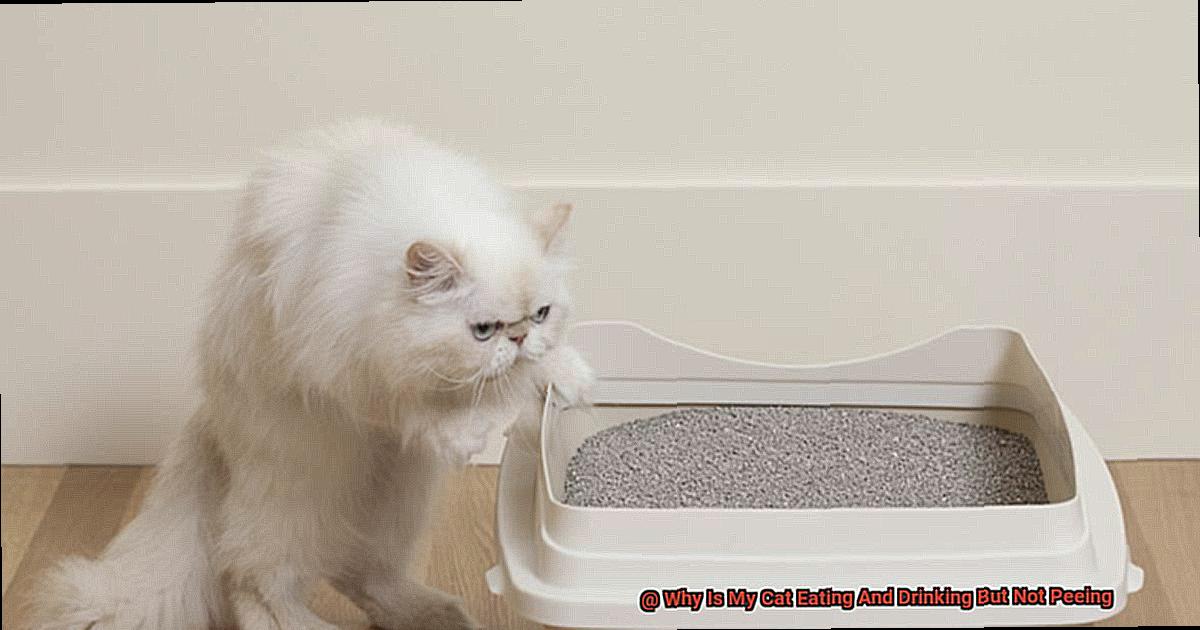
Symptoms of FLUTD in Cats
These can be signs of FLUTD, a common condition in cats that can lead to difficulty urinating or even the inability to urinate.
As an expert in this field, I’m here to explain some of the common symptoms of FLUTD in cats. Firstly, cats with FLUTD may experience a frequent urge to urinate, but only produce small amounts. This could be indicative of discomfort or pain during urination. Secondly, they may cry or wince while urinating due to the pain caused by inflammation in the urinary tract.
Additionally, blood in the urine is a telltale sign of FLUTD. The amount of blood can vary from small specks to large clots, and it’s important to seek veterinary attention immediately. Furthermore, your cat may start avoiding their litter box altogether because they associate it with pain and discomfort.
It’s crucial to note that these symptoms can also indicate other medical conditions. Therefore, if you notice any of these signs in your cat, it’s essential to consult with a veterinarian. Early detection and treatment are key to managing FLUTD and preventing more serious complications such as urinary blockages.

Causes of Cats Not Urinating Despite Eating and Drinking
It can be worrisome when your cat isn’t urinating despite eating and drinking normally. But don’t fret, as there are several possible reasons for this phenomenon.
One of the most common causes is a urinary tract blockage. This happens when crystals or stones form in the bladder, causing a blockage in the urethra. Male cats are more prone to this condition due to their narrow urethras. But don’t worry, your vet can help clear the blockage and get your cat back to normal.
Another possible cause is a urinary tract infection, which can cause pain and discomfort during urination. This can lead your cat to avoid using the litter box altogether. Cats may also develop bladder inflammation known as interstitial cystitis, which can cause similar symptoms.
Moreover, certain medications or medical conditions such as kidney disease or diabetes can also lead to decreased urine output. Cats with these conditions may drink more water than usual but still not produce enough urine.
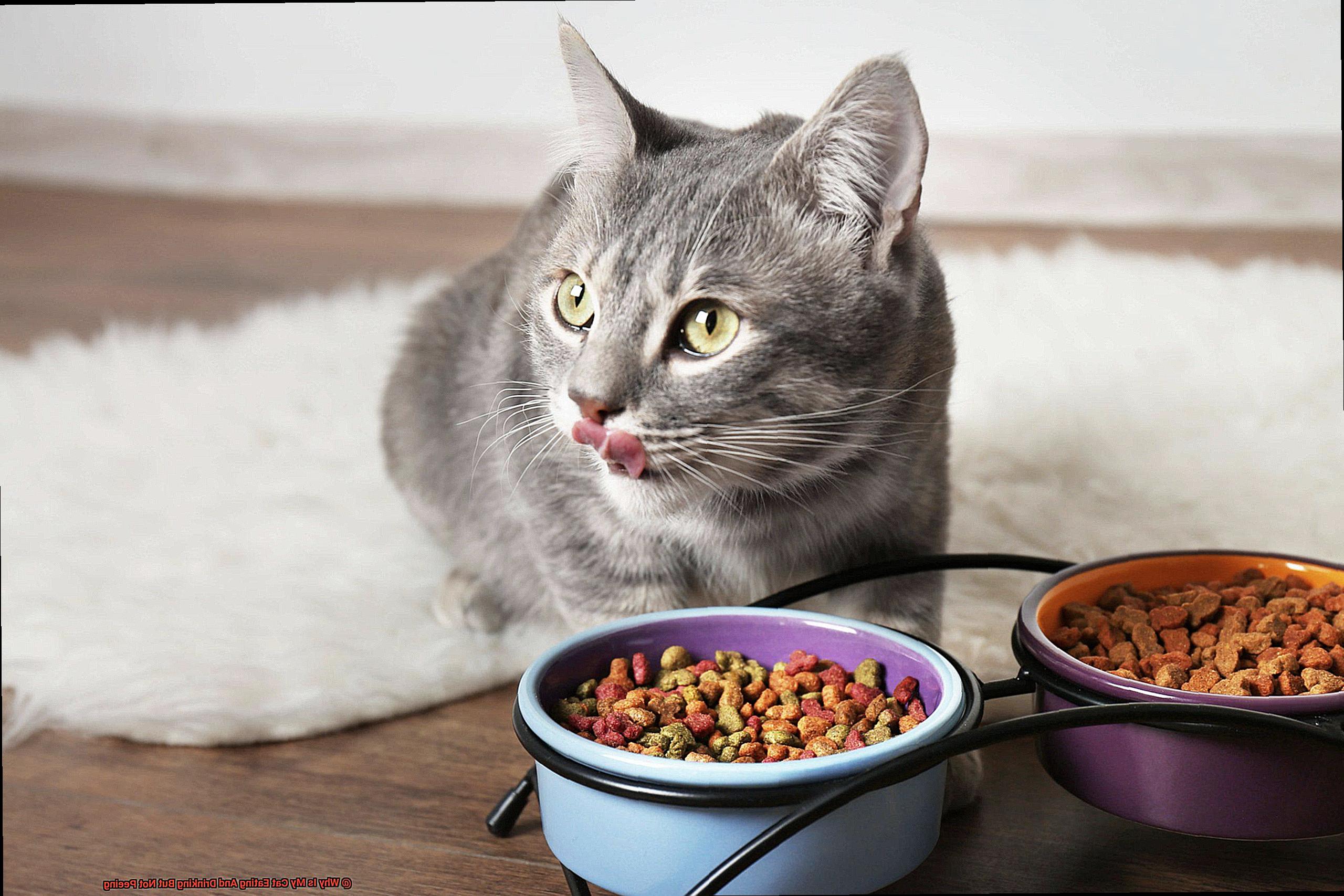
It’s imperative to note that not urinating can be a severe condition for cats and may lead to kidney damage or failure if left untreated. Therefore, if you notice that your cat isn’t urinating despite eating and drinking normally, seek veterinary care immediately.
Several possible reasons could explain why your cat isn’t urinating despite eating and drinking normally. Keep an eye on your feline friend’s behavior and monitor their litter box habits regularly to detect any potential problems early on.
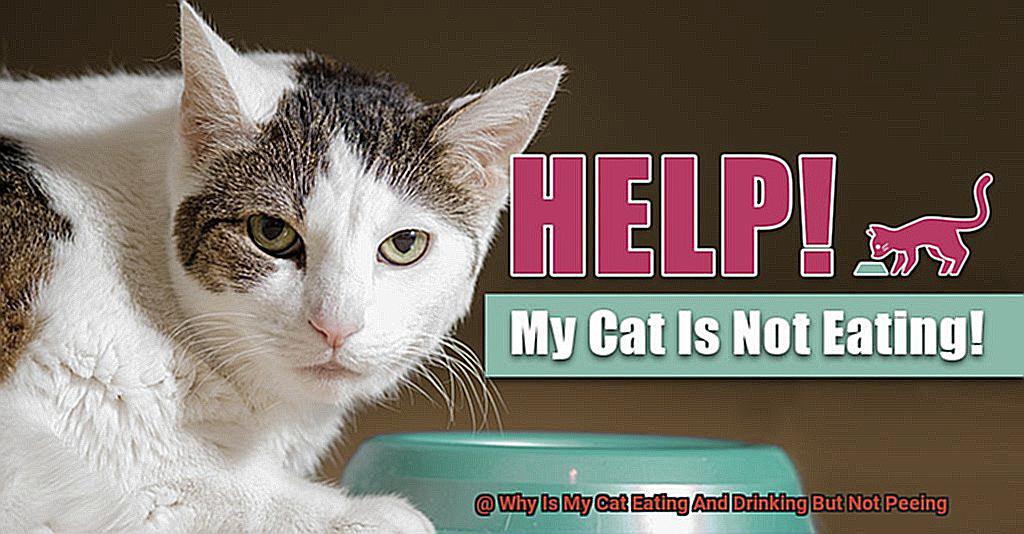
Diagnosis of a Cat’s Urinary Issue
These could be symptoms of a urinary issue that needs immediate attention. As a responsible pet owner, it’s essential to understand the common urinary problems that cats can experience and how to diagnose them.
The most common urinary issues in cats include bladder stones, urinary tract infections (UTIs), feline lower urinary tract disease (FLUTD), and urethral obstructions. To determine the underlying problem, your veterinarian will conduct a thorough physical examination and take urine samples for analysis. They may also recommend blood tests and imaging tests like X-rays or ultrasounds to identify any abnormalities in the bladder or urinary tract.
Once diagnosed, your veterinarian will recommend an appropriate treatment plan based on the specific issue. For UTIs, antibiotics are usually prescribed to treat the infection, while bladder stones may require surgery or a special diet to dissolve them. FLUTD can be managed with medication and changes in the cat’s diet and lifestyle. In the case of urethral obstructions, immediate intervention such as catheterization or surgery is necessary.
It’s important to monitor your cat’s urination habits regularly and seek veterinary care immediately if you notice any changes in their behavior or symptoms of a urinary issue. Early diagnosis and treatment can prevent further complications and improve your cat’s overall health and wellbeing.
Treatment Options for Urinary Issues in Cats
With appropriate treatment, your cat can make a complete recovery and live a long and healthy life. Let’s explore the various treatment options available for urinary issues in cats.
The first step is to identify the underlying cause of the problem. Once the cause is established, treatment options can vary. Your veterinarian may prescribe medications like antibiotics, anti-inflammatory drugs, or pain relievers to alleviate symptoms and treat underlying infections or inflammation.
Dietary changes may be recommended to help manage urinary issues in cats. Switching to a specialized diet that helps prevent the formation of urinary crystals or stones can often do the trick. Be sure to follow your vet’s recommendations for dietary changes carefully.
If your cat has an obstruction in their urinary tract, surgery might be necessary to remove it and allow urine to flow freely again. The procedure typically requires an overnight stay at the animal hospital and is performed under general anesthesia.
Fluid therapy might also be recommended if your cat is dehydrated or not producing enough urine. This therapy helps flush out their system and promotes urination.
In some cases, behavioral modifications might be necessary to manage urinary issues in cats. Litter box training or providing multiple litter boxes throughout the home are helpful techniques.
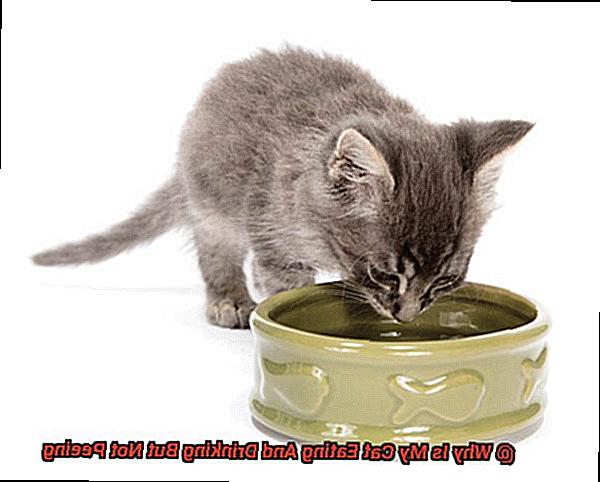
It’s crucial to work closely with your veterinarian to determine the best course of treatment for your cat’s specific needs. With proper care and attention, many cats with urinary issues can live happy and healthy lives.
Urinary issues can be uncomfortable for cats, but there are several effective treatment options available. These include medications, dietary changes, surgery, fluid therapy, and behavioral modifications.
Prevention Tips for Future Urinary Issues in Cats
One of the most common health issues that cats face is urinary problems. However, with a few simple prevention tips, you can minimize the risk of your cat developing these issues and maintain their urinary health.
Ensure Adequate Hydration:
The first step in preventing urinary issues in cats is to make sure your cat drinks plenty of water. Adequate hydration is essential for flushing out toxins and preventing the formation of crystals in the bladder. You can encourage your cat to drink more water by investing in a pet fountain or adding wet food to their diet. A well-hydrated cat is a healthy cat.
Feed a Balanced Diet:
Feeding your cat a balanced diet that meets all their nutritional requirements is crucial for maintaining their urinary tract health. Look for foods that are specifically designed for urinary health and contain ingredients like cranberries and vitamin C, which help maintain the correct pH balance in your cat’s urine and prevent the formation of bladder stones or crystals.
Regular Litter Box Cleaning:
Keeping your cat’s litter box clean and hygienic is also essential for preventing urinary issues. A dirty litter box can lead to the buildup of bacteria, which can cause urinary tract infections in cats. Make sure to clean the litter box regularly and keep it in a clean condition. Moreover, if you have multiple cats, they should have access to multiple litter boxes.
Regular Vet Check-Ups:
Regular check-ups with your veterinarian are another important part of preventing urinary issues in cats. Your vet can perform tests like urinalysis and blood work to evaluate your cat’s overall health and identify any underlying issues early on. This way, you can take action before the issue becomes serious.
Keep Your Cat at a Healthy Weight:
Excess weight puts pressure on the bladder and urinary tract, leading to issues such as urinary blockages. Therefore, it is essential to maintain your cat’s healthy weight. Regular exercise and a balanced diet are the keys to maintaining a healthy weight in cats.
By following these prevention tips, you can minimize the risk of your cat developing urinary issues and ensure their overall health and well-being.
Remember, prevention is always better than cure. If you notice any changes in your cat’s behavior or habits, such as frequent trips to the litter box or difficulty urinating, it is important to consult with your veterinarian right away.
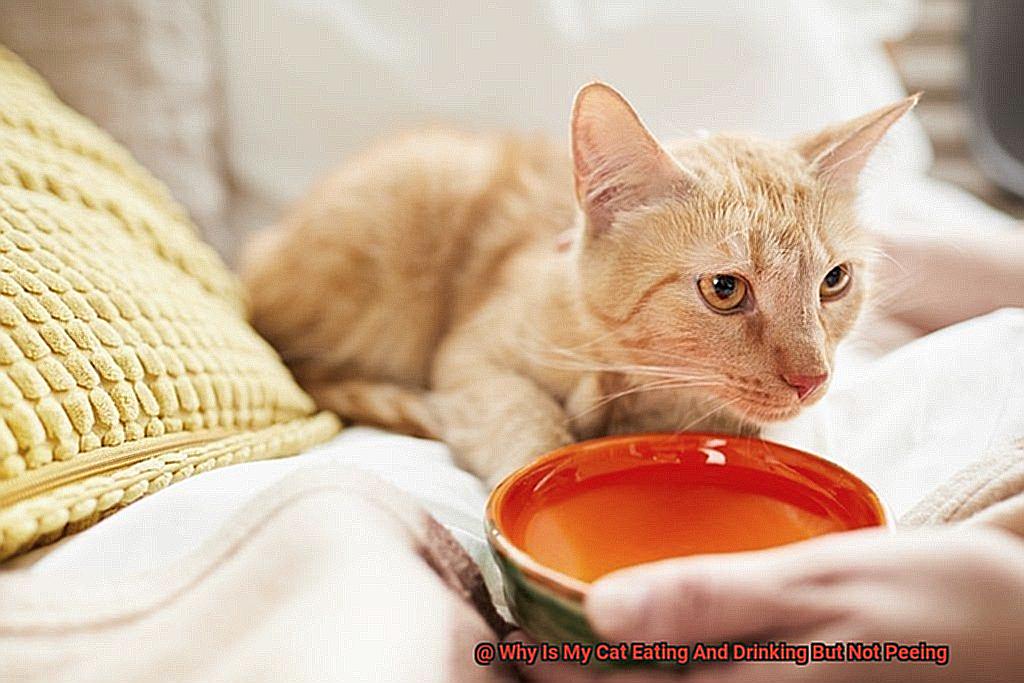
How to Monitor Your Cat’s Urine Output
One of the ways to achieve this is by monitoring your cat’s urine output regularly. This can help identify any potential health issues early on and ensure that your cat receives prompt medical attention if needed. In this blog post, we’ll explore on how to monitor your cat’s urine output effectively.
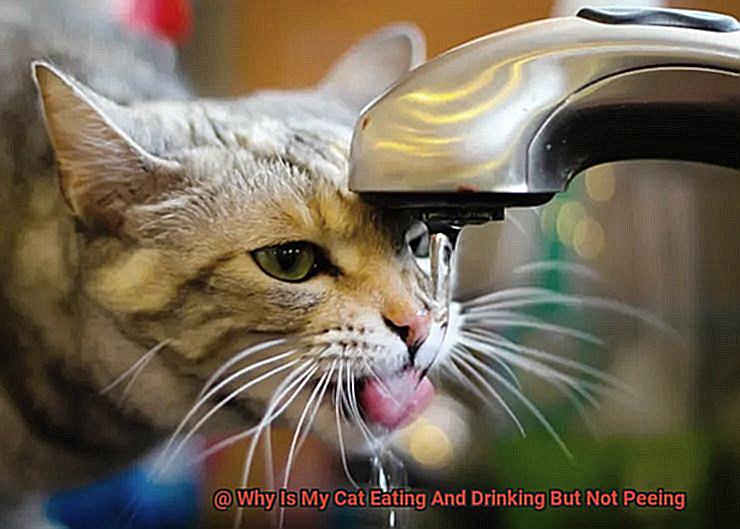
Measuring your cat’s urine output is a simple and effective way to monitor their health. You can use a measuring cup or a plastic container with volume markings to measure the amount of urine produced each day.
Additionally, placing a shallow pan under the litter box can collect the urine, making it easier to measure the amount produced. Comparing the amount of urine produced each day to your cat’s normal output is essential as changes in output could be a sign of underlying health issues.
Subtopic 3: Observing the Color and Smell of Your Cat’s Urine
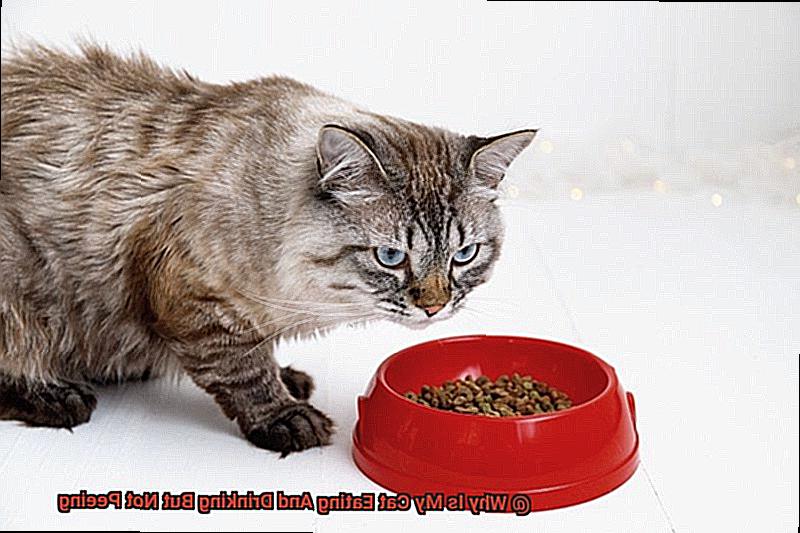
Another effective way to monitor your cat’s urine output is by observing the color and smell of their urine. Normal cat urine should be pale yellow and have a mild odor. If you notice that your cat’s urine is dark in color or has a strong odor, it could be a sign of dehydration or a urinary tract infection. Changes in the color and smell of your cat’s urine should not be ignored as they can indicate underlying health problems.
Dehydration can lead to urinary tract problems, so it’s crucial to provide your cat with plenty of fresh water.
Ensure that your cat has access to clean water throughout the day and consider providing them with a water fountain or adding some wet food to their diet. This can help increase their water intake, making it less likely for them to become dehydrated.
If your cat is not drinking enough water, you may also consider adding low-sodium chicken broth to their water bowl to make it more appealing.
szvhsy7Qlhc” >
When to Seek Veterinary Care
However, there are times when our cats may experience health issues that require immediate attention. One of the most critical signs is when your cat has not peed for more than 24 hours. This could be a sign of urinary tract blockage or other serious health problems.
When it comes to urinary issues, cats may display several signs that require urgent veterinary care. For instance, frequent licking or grooming of their genital area, straining to urinate, or crying out in pain while trying to urinate are all indications that your cat needs medical attention.
Urinary tract blockages can lead to severe complications such as bladder rupture, kidney failure, or even death if left untreated. Therefore, it’s crucial to take quick action if you notice any of these signs in your cat. If your cat has a history of urinary tract infections or kidney problems, seeking veterinary care as soon as possible is vital.
Older cats are more prone to developing urinary issues, so it’s essential to keep an eye on their behavior and habits. If you’re unsure whether your cat needs veterinary care or not, it’s better to be safe than sorry and seek professional help.
Remember, your cat’s health is a top priority, and immediate veterinary care can save their life.
Seeking veterinary care when necessary can prevent severe health complications and improve our cat’s quality of life.
Don’t hesitate to contact your veterinarian if you have any concerns about your cat’s behavior or output.
Also Read: My Cat Hasn’t Peed Or Pooped In 2 Days! (Helpful Tips)
Conclusion
To sum it up, keeping a watchful eye on your feline companion’s urination habits is crucial. Changes in their behavior can indicate underlying health issues that require immediate veterinary attention.
Common causes of cats not peeing despite eating and drinking include urinary blockages, UTIs, FLUTD, or dehydration. Don’t hesitate to seek professional help if you suspect any of these conditions.
Prevention is key when it comes to avoiding urinary problems in cats. Ensuring they stay hydrated, feeding them a balanced diet, keeping their litter box clean and hygienic, regular vet check-ups, and maintaining a healthy weight are all effective ways to prevent issues from arising.
Monitoring your cat’s urine output regularly is also essential for catching potential health problems early on. Measuring the amount of urine produced each day, observing its color and smell, and ensuring your cat stays hydrated are all great ways to keep tabs on their urinary health.
Remember that seeking veterinary care promptly is vital for your cat’s well-being. Early intervention can prevent further complications and improve their quality of life.







